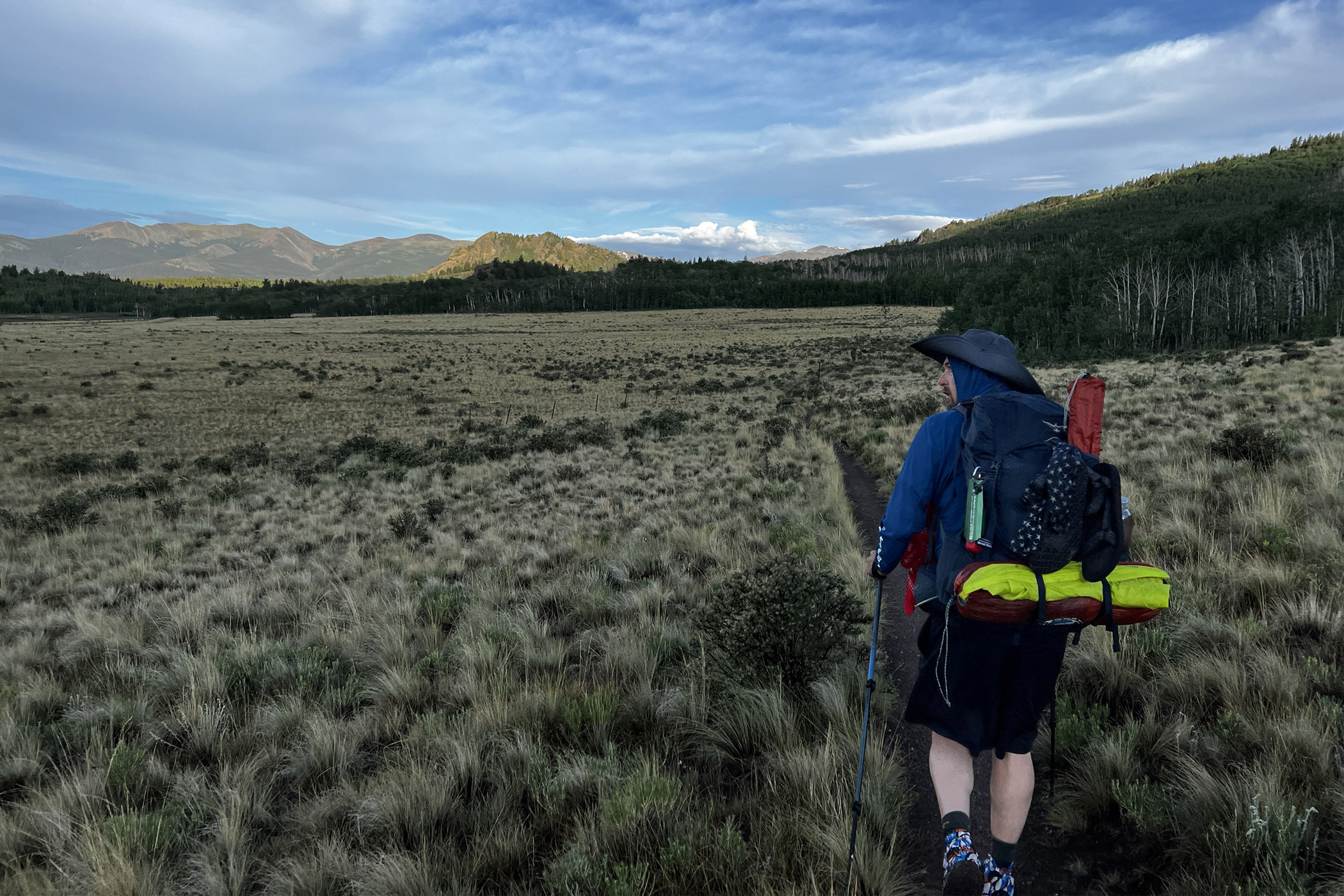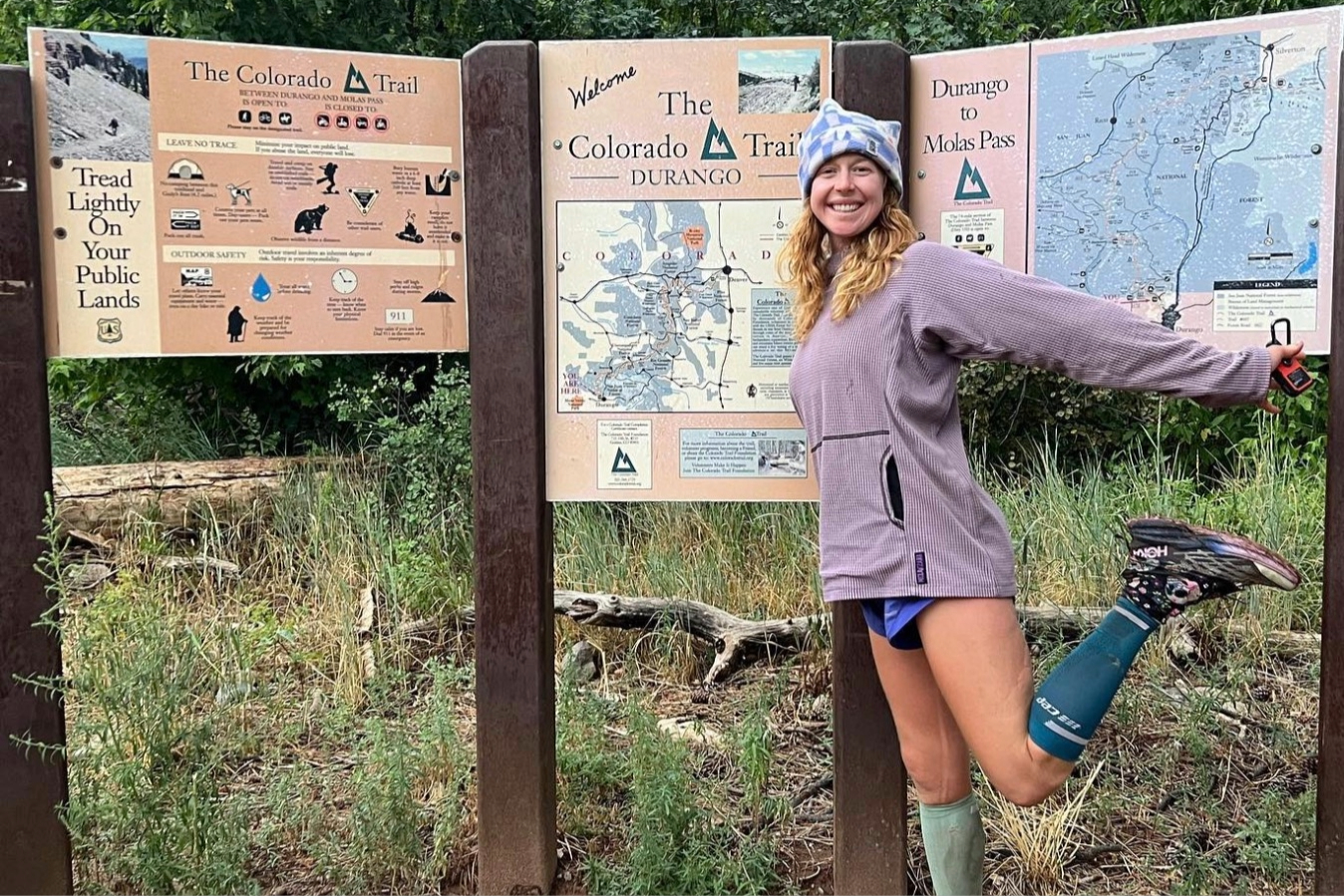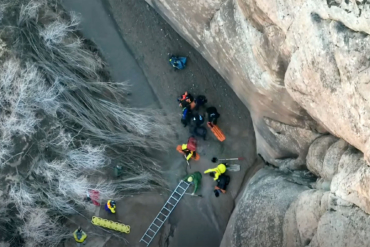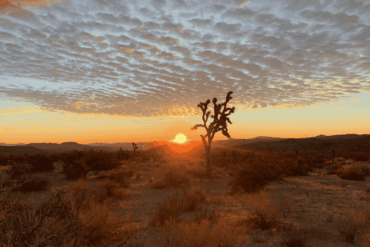Hikers are an ingenuitive bunch. Every backpacker can remember that moment when they learned a new way to use a piece of gear that makes life easier on the trail. Whether it’s finding a lighter that doubles as a bottle opener or a pump sack that works as a pack liner, we all have little tricks that save us time, weight, and energy on the trail.
After hiking the Colorado Trail (CT) this summer, I picked up a few gems when it comes to backpacking hacks. Between testing various gear and modes of using it, and talking to other veteran hikers making their way along the trail, I learned a lot. Every thru-hiker seems to have their own strategies and methods, and most are more than willing to share them.
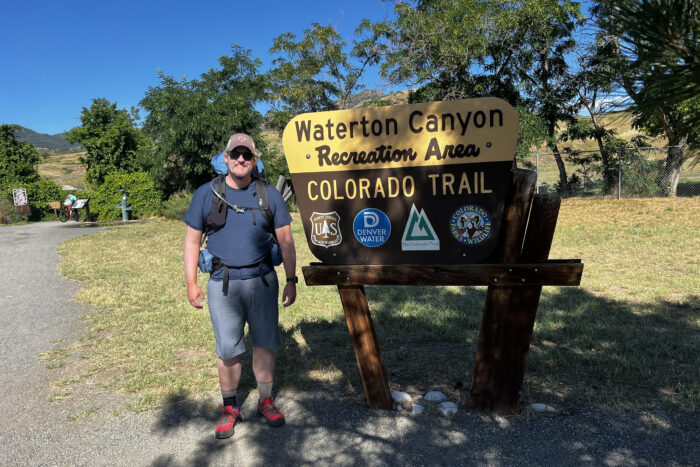
From how to deal with nagging blisters to cleaning your gear when you don’t have a towel, I’ve opened up my trail notebook to share some of the best backpacking hacks, thru-hiking tips, and general tricks I picked up on the CT this summer.
Backpacking Hacks, Tips, and Tricks for Thru-Hikers
1. iPhone ‘Measure’ App or Water Bottle Test
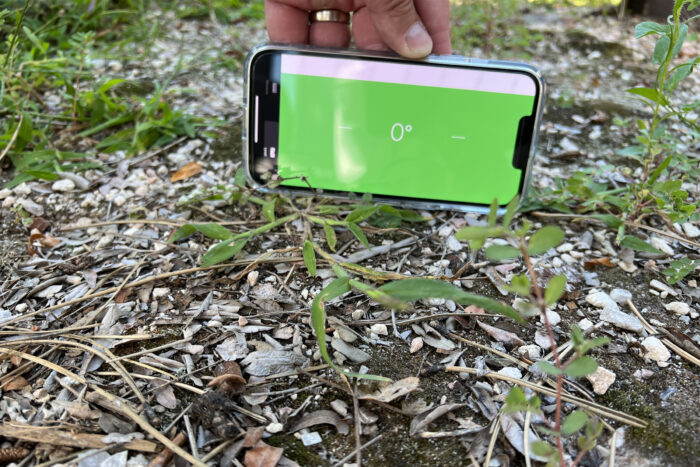
There’s nothing worse than setting up camp after a long day of hiking, only to lie down for the evening and realize you’re sleeping on a slope. If you don’t get up and re-orient your tent, you’ll be sliding down into the corner all night long.
A simple backpacking hack to ensure your campsite is level is to whip out your iPhone (if you have one) and pull up the Measure app when you get to camp. Align your phone with the ground to detect subtle grades and quickly determine which way to set up your tent.
For the Android users out there, there’s also the bottle test. Simply place a water bottle on the ground and watch which way it rolls. The iPhone Measure backpacking hack is easier and more accurate — but the bottle test is a good backup if you don’t have an iPhone or run out of battery.
2. Beat Blisters
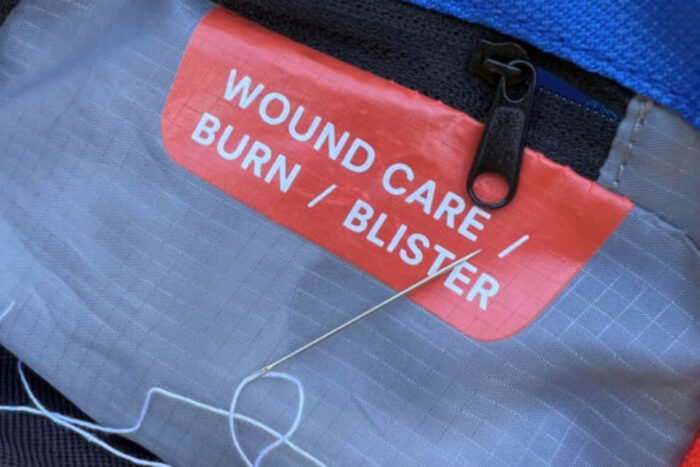
Blisters can be a big problem on the trail and something that many thru-hikers face. If severe and not cared for properly, blisters can mean the end of your hike. They can even result in a visit to a hospital if they get really bad.
Multiple hikers on the trail recommended beating blisters once they have formed by using a needle and thread. The trick is to fully sterilize a needle and thread, then pass it through the blister, leaving a thread on either end to slowly drain the blister. Alleviating the pressure of the blister while keeping the skin in place over it for protection aids in healing.
However, it’s ideal to prevent blisters from forming in the first place. Keeping your feet dry and addressing hot spots early are the ideal ways to do this. You can also use moleskin or (better yet) Leukotape to keep blisters away.
GearJunkie has a whole list of tips for mitigating blisters and hot spots on the trail — from foot lube to taping techniques.
3. Sundried Gear

When you’re setting up camp in the rain and breaking it down before dawn breaks, everything gets wet and stays wet. Once tents, clothes, and sleeping bags are wet, it can be treacherous to continue — steep temperature drops at night combined with cold gear can mean hypothermia if you’re not careful.
Instead of packing away wet gear in the morning, try strapping it to the top or outside of your pack while you’re hiking. As long as the sun is out, damp clothing and gear can dry out while you’re moving along the trail.
And hang dry anything you can while you’re at your site packing up or eating breakfast in the morning. Even a few minutes of direct sunlight can go a long way in drying out your gear.
4. Solar Panels Stay Charged Up
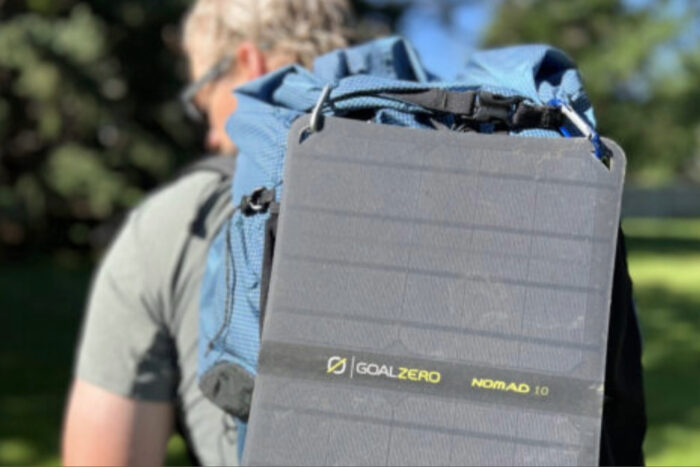
With apps like onX and FarOut, a phone is more important than ever on the trail these days. While you still need physical topo maps as backups, keeping your phone, headphones, smartwatch, or Kindle charged on the trail is key. A major gear tip is to bring a Goal Zero Nomad 10 Solar Panel — or a comparable version — with you that you can hang off the top of your pack.
When the sun is out, the solar panel will collect power while you hike. It fully charges a phone in an hour or two.
Pro tip: You can pair the solar charger with a battery pack such as the Nitecore Power Bank and you can have indefinite power on the trail, so long as the sun is shining.
5. Pine Trees = Nature’s Scrubbers
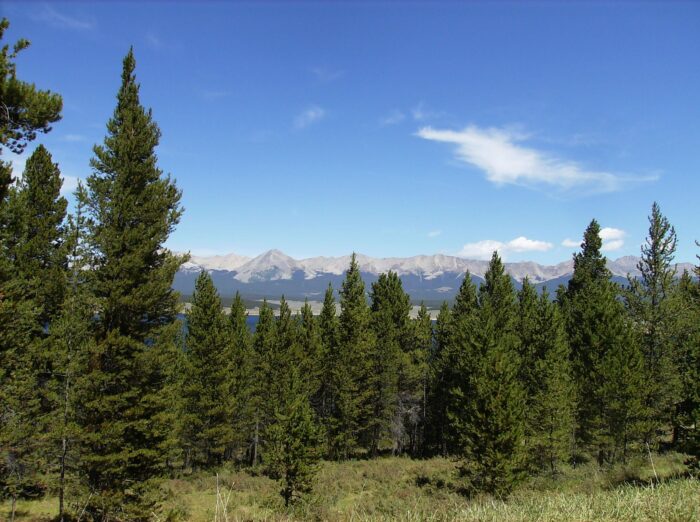
Some people like to pack a small towel to help with cleaning. But towels can get very dirty — especially if you’re using them to clean camp bowls, cookware, and utensils. As an alternative, pine trees double as nature’s own scrub brush and don’t take up any space in your pack.
Whether it’s cleaning the last bit of food out of a pot or clearing mud and debris off of your gear, a pine tree branch works well to wipe or scrub items down. You don’t even need to cut the branch, just find a smaller new-growth pine tree with soft needles and move dirty gear through it.
Pro tip: For obvious reasons, avoid doing this with soft items or down-filled gear that could get punctured by a sharp pine needle. And try to be gentle with the tree. It’s doing you a favor, after all.
6. Top Quilt to Cut Weight

The backpacking industry is built around sleeping bags. However, a top quilt is a great alternative for those looking to go light and still stay warm.
A top quilt is similar to a sleeping bag but doesn’t have a hood or the ability to zip closed. Instead, it drapes over you — but still has a footbox like most sleeping bags on the market. I paired an Outdoor Vitals Stormloft Down Quilt with a NEMO Tensor Ultralight Sleeping Pad to create a warm, lightweight sleep system. Combined, the two weigh just over 2 pounds and compact down to almost nothing inside your pack.
With rain, there were some cold nights on the CT where I could see my breath. But the top quilt, rated at 20 degrees Fahrenheit, kept me warm enough. If you run cool, bring a sleeping bag liner to stay extra toasty under your quilt. But at that point, it might be worth looking into a lightweight backpacking sleeping bag.
7. Save Silica Packets
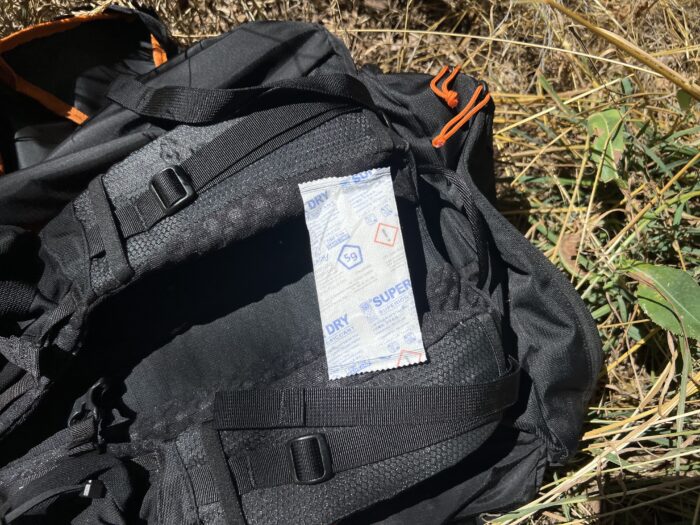
There’s a lot of water on the CT between streams, rivers, lakes, and rainstorms. The same could be said for the Pacific Crest Trail (PCT) and the Appalachian Trail (AT). If any of that moisture finds its way into your phone, electronics, or lighters, it can spell trouble.
Whether you accidentally drop your phone in a river while filtering water or get caught in a hailstorm, there’s an easy hack to drying out your gear on the trail. Simply grab some of those silica packets out of a backpacking meal or beef jerky bag, put the packets and your wet items in a ziplock bag for a few hours, and voila, your gear is dry again and (hopefully) ready to work.
The small packets are designed to absorb moisture and can help pull it out of your phone or gear with ease. Keeping a handful of them in your pack is never a bad idea.
Colorado Trail: Backpacking Hacks and Thru-Hiking Tips
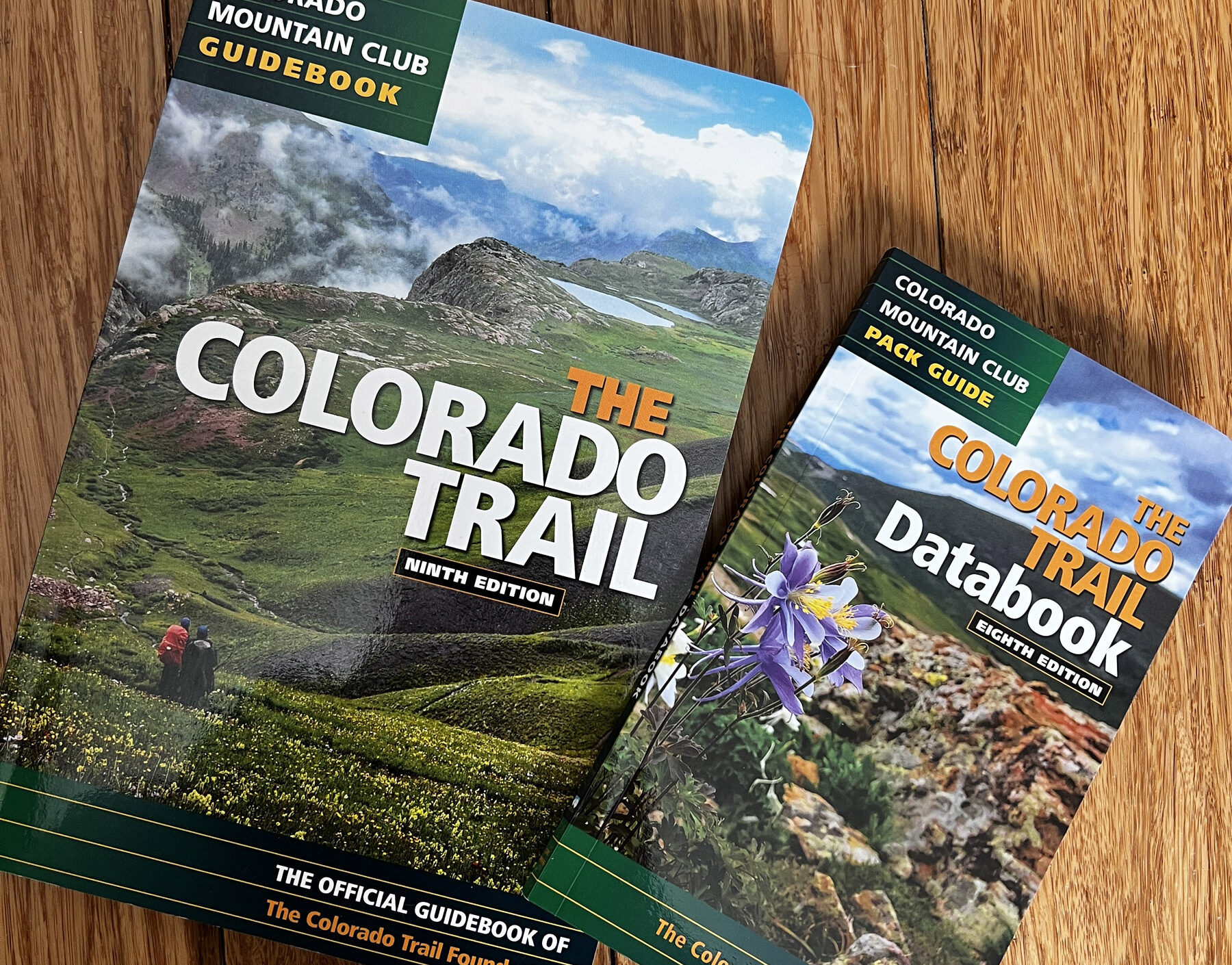
While there are tons of tips, tricks, and hacks out there to help backpackers tackle the trail in style, these are just a few to consider incorporating into your next trip. People have written books on thru-hiking, and several exist for hiking the Colorado Trail specifically.
But one of the best ways to learn clever hiking hacks like these is to just talk with other hikers. People are usually more than willing to stop for some trail talk and to exchange beta and advice.
If you’ve got more thru-hiking tips or backpacking hacks of your own, feel free to share them! We’re always looking to try something new out there — and the more creative, the better.
